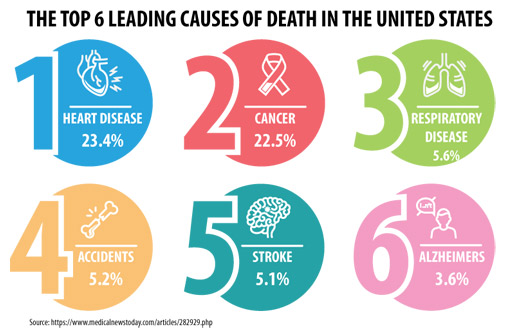
Do You Know Hospitalization
- Hospital care expenditure accounted for 32 percent of all Health expenditure in 2015
- Roughly 10 Trillion dollars were spent on Hospital care for clients.
- This number represents a 56% increase in 2015 as compared to 2014.
- Hospitalization can be due to Acute Conditions and Chronic Conditions
- Acute Conditions like accidents, injuries, Acute Heart attacks, Stroke and other emergent conditions are non-preventable.
- Chronic Conditions and their complications are the major reason for all Hospitalizations and a large part of these are preventable.
- Hospital Readmissions and their scope
- Scope of Hospital Readmissions
- Nearly one in every five Medicare patients discharged from the hospital is readmitted within 30 days.
- Across all insured patients, the preventable readmission rate is 11 percent; for Medicare patients the rate is 13.3 percent.
- 836,000, or 12 percent, of the more than 7 million 30-day hospital readmissions that occur each year are preventable.
- Costs of Hospital Readmissions
- Preventable hospital readmissions cost the U.S. health care system an estimated $25 billion an¬nually.
- Reasons for Readmission
- Patients experience preventable medical errors and complications during the first hospital stay.
- Patients have limited or no access to effective post-hospital follow-up care (e.g. rehabilitation) in their communities.
- Patients and their families are inadequately informed about appropriate post-discharge care.
- Hospital records and discharge instructions are not effectively and efficiently disseminated to primary care clinicians and other post-discharge care providers to support the patient's recovery.
- Types of Patients Readmitted
- Preventable readmission rates are highest among patients with heart failure, COPD, psychoses, intestinal problems and/or those who have had various types of surgery (cardiac, joint replace¬ment or bariatric procedures).

Humana Tests Remote Patient Monitoring to Reduce Readmissions
By Margaret Dick Tocknell
The insurer's chronic care health division is partnering with several telehealth providers to test various remote monitoring formats for common causes of readmissions.
Read in detail
Source: http://www.healthleadersmedia.com/health-plans/humana-tests-remote-patient-monitoring-reduce-readmissions#
Telehealth Program Reduces Hospital Readmissions Among High-risk Cardiac Patients
As the largest and most widely-recognized non-profit home care agency in northern Illinois, the Visiting Nurses Association of Rockford (VNA) currently uses Honeywell's Genesis family of remote patient monitors in conjunction with its LifeStream Management Suite to monitor home health patients and keep hospital readmissions low. But recently the VNA Rockford team expanded access to their remote patient monitoring (RPM) services to previously non-qualified, high-risk CHF patients to bring about sustained readmission reductions – reported at around 14 percent, year-to-date.
Read in detail
Source: https://www.heart.org/idc/groups/heart-public/@wcm/@hcm/documents/downloadable/ucm_468403.pdf
Tele-Monitoring Helps Reduce CHF Hospitalizations
Every morning at 7:15, Joan Hergenrother is greeted by a friendly computerized voice that reminds her to step on a "smart" scale.
Read in detail
Source: http://www.ingalls.org/joan-hergenrother-home-care